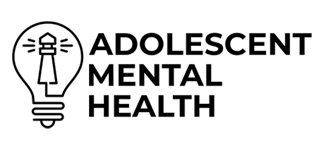ADHD Paralysis: 10 Best Tips to Break Free
Struggling to get things done despite your best efforts? It could be ADHD paralysis. This article explains what ADHD paralysis is, how it disrupts daily life, and offers ten practical tips to help you overcome it.
Key Takeaways
ADHD paralysis is a state of overwhelm that manifests as an inability to start or complete tasks, often due to emotional overload or excessive stimuli.
Effective strategies to manage ADHD paralysis include breaking tasks into smaller steps, prioritizing effectively, and utilizing external tools like reminders and task management apps.
Creating a supportive environment and incorporating self-care practices play crucial roles in reducing ADHD paralysis and enhancing overall well-being.
ADHD Paralysis: 10 Best Tips to Break Free

ADHD paralysis, often mistaken for laziness or procrastination, is actually a state of complete overwhelm, where the brain shuts down in response to excessive stimuli or emotional overload. This phenomenon is common among those with Attention Deficit Hyperactivity Disorder (ADHD), affecting their ability to initiate or complete tasks.
Our goal is to demystify ADHD paralysis and provide you with ten practical tips to manage it effectively. From breaking tasks into smaller steps to seeking professional help, these strategies aim to enhance productivity and reduce the feelings of being overwhelmed.
Understanding these tips can transform how you approach daily tasks, leading to a more organized and fulfilling life.
Introduction
ADHD paralysis is a phenomenon where individuals with ADHD find themselves unable to start or complete tasks, leading to significant frustration and a sense of helplessness. This state of paralysis is not due to a lack of willpower or laziness but rather a result of feeling overwhelmed by information, emotions, or sensory input. Many individuals experience adhd paralysis in their daily lives.
Gaining an understanding of ADHD paralysis allows individuals to gain insights into their behavior and develop effective coping strategies. This blog post will explore the nature of ADHD paralysis and provide practical tips to help young people and adults alike navigate the challenges it presents, ultimately improving their ability to manage daily responsibilities and enhance their overall well-being.
Understanding ADHD Paralysis

ADHD paralysis, sometimes referred to as analysis paralysis or ADHD shutdown, occurs when the ADHD brain becomes overwhelmed, leading to a loss of functionality. This state of paralysis can manifest in various ways, from feeling mentally foggy to being completely immobilized and unable to initiate tasks.
It’s important to recognize that ADHD paralysis is not a formal medical diagnosis but a common experience among people with ADHD. The emotional toll of ADHD paralysis includes feelings of inadequacy, frustration, and helplessness, often exacerbating the symptoms of ADHD.
Recognizing these elements helps in developing strategies to manage ADHD paralysis.
Types of ADHD Paralysis
ADHD paralysis can be categorized into three primary types: mental paralysis, task paralysis, and choice paralysis. Each type presents unique challenges and requires specific strategies to overcome.
Identifying these types aids in finding effective ways to manage ADHD paralysis and enhance daily functioning.
ADHD Mental Paralysis
ADHD mental paralysis is characterized by an overwhelming flood of thoughts, emotions, or sensory input that makes it difficult to process information. This type of paralysis often leads to confusion, inability to focus, and a pervasive sense of mental fatigue. For those experiencing ADHD mental paralysis, tasks that require concentration and cognitive effort become nearly impossible to complete.
Overcoming mental paralysis involves strategies that help calm the mind and organize thoughts. Techniques such as creating a daily brain dump can provide a structured way to manage information that can make you feel overwhelmed and reduce mental clutter.
Identifying the signs of mental paralysis early enables the implementation of strategies before the overwhelm becomes too severe.
ADHD Task Paralysis
ADHD task paralysis occurs when individuals feel stuck and unable to start or complete tasks, often due to the overwhelming mental effort required. This type of paralysis is common when faced with new, complex, or boring tasks that seem too daunting to tackle. The fear of making mistakes, perfectionism, and lack of motivation further exacerbate task paralysis.
To manage task paralysis, breaking down tasks into smaller, manageable steps can be highly effective. This approach not only reduces the overwhelming nature of large tasks but also provides a sense of accomplishment that can boost motivation and productivity.
Identifying the triggers and using these strategies can help individuals overcome task paralysis.
ADHD Choice Paralysis
ADHD choice paralysis, also known as analysis paralysis, occurs when individuals are faced with too many options, leading to indecision and inaction. This type of paralysis stems from the difficulty in making decisions due to the overwhelming array of choices and the fear of taking the wrong step. Overthinking and overanalyzing each option can cause a mental freeze, preventing any action from being taken.
Managing choice paralysis involves limiting options and simplifying decision-making processes. Techniques such as setting clear criteria for decisions and using decision-making frameworks can help reduce the overwhelm and facilitate more confident choices.
Being aware of choice paralysis and having strategies in place can greatly improve decision-making abilities.
Common Causes of ADHD Paralysis

The common causes of ADHD paralysis include executive dysfunction, emotional dysregulation, and sensory overload. Executive function affects planning and task completion, making it difficult to stay organized and manage time effectively. Emotional dysregulation, characterized by mood swings and frustration, can divert attention from tasks and trigger productivity shutdowns.
Sensory overload is another significant cause, where excessive sensory input overwhelms the brain, leading to cognitive shutdown. Additionally, perfectionism can set unattainably high standards, causing individuals to avoid tasks altogether due to fear of failure.
Recognizing these causes is essential for creating targeted strategies to manage ADHD paralysis.
Recognizing Symptoms of ADHD Paralysis
Symptoms of ADHD paralysis often present as mental fog, where individuals struggle with brain fog and maintain focus and organization. Overthinking, poor time management, and emotional volatility are common symptoms that exacerbate the feeling of being overwhelmed.
People experiencing ADHD paralysis frequently encounter indecisiveness and difficulty in making decisions due to the sheer volume of options and the fear of making the wrong choice. Identifying these symptoms early aids in implementing strategies to manage ADHD paralysis effectively, reducing its impact on daily life.
Impact of ADHD Paralysis on Daily Life

ADHD paralysis significantly impacts daily life, making it challenging to keep up with work responsibilities, household chores, and personal relationships. The overwhelming stress from mundane tasks can lead to a mental shutdown, further compounding the difficulties faced by individuals with ADHD.
Many individuals with ADHD report feeling like they are underperforming or letting others down due to the effects of ADHD paralysis. The chronic stress and frustration associated with ADHD paralysis can lead to mental health issues such as anxiety and depression, further affecting overall well-being.
Strategies to Overcome ADHD Paralysis

Gaining an understanding of ADHD paralysis is the first step towards creating effective management strategies. Techniques such as creating a daily brain dump to organize thoughts and tasks can provide clarity and reduce mental clutter. Using tools like to-do lists, calendars, and mobile apps can help in organizing responsibilities and managing daily tasks.
Adopting a patient and kind mindset towards oneself is essential while implementing these strategies. Movement breaks and setting realistic goals can also help in managing ADHD paralysis by revitalizing focus and reducing feelings of being overwhelmed.
These strategies, when consistently applied, can significantly improve productivity and reduce the impact of ADHD paralysis.
Break Tasks into Manageable Steps
One of the most effective strategies to manage ADHD paralysis is to break large tasks into smaller, manageable steps. This method reduces the overwhelming nature of big tasks by setting realistic and achievable goals. Breaking tasks into smaller segments that can be completed quickly encourages a sense of accomplishment and boosts motivation.
Sub-tasks should be small enough to be completed within an hour, providing frequent opportunities for success and reducing the risk of mental fatigue. This strategy not only makes tasks more manageable but also helps maintain focus and productivity.
Prioritize Tasks Effectively
Effective task prioritization is key to managing ADHD paralysis. Methods like the Eisenhower Matrix, which divides tasks into four categories based on urgency and importance, can help in determining priorities. This approach ensures that high-priority tasks are addressed first, reducing the feeling of being overwhelmed by a long to-do list.
Using time blocks for single tasks can also help manage attention and maintain focus. By prioritizing tasks and managing time effectively, individuals can reduce the stress associated with ADHD paralysis and improve their overall productivity.
Use External Tools and Reminders
External tools such as reminders and task management apps play a crucial role in overcoming ADHD paralysis. Setting up reminders through apps can help individuals stay organized and maintain focus on their tasks.
To-do lists and visualizing tasks can alleviate the feeling of overwhelm and offer a clear roadmap for task completion. Incorporating external tools into daily routines can significantly enhance productivity and help manage ADHD symptoms effectively.
Creating a Supportive Environment
Creating a supportive environment is essential for managing ADHD paralysis. Organizing your workspace to reduce distractions can boost focus and productivity. Informing others about your ADHD can help you receive necessary support and understanding in various situations.
Body doubling, where tasks are completed alongside another person, can provide accountability and focus. Incorporating novelty and changing your environment regularly can keep work interesting and increase productivity. Consistency in routines helps minimize decision fatigue and manage task paralysis more effectively.
Incorporating Self-Care Practices
Incorporating self-care practices is vital for managing ADHD paralysis. Engaging in consistent physical activity boosts neurotransmitter levels, enhancing attention and focus. A balanced diet, rich in protein and whole grains, helps stabilize blood sugar and optimize brain function.
Mindfulness practices, such as meditation and journaling, can help reduce stress and improve emotional regulation. Short breaks between tasks can help prevent mental fatigue and keep motivation high. Focusing on completing tasks rather than seeking perfection can reduce anxiety and improve productivity.
Seeking Professional Help
Seeking professional help is crucial for managing ADHD paralysis. Therapy provides strategies to manage symptoms and develop coping mechanisms. Health professionals can tailor medication dosages based on their effectiveness in controlling ADHD symptoms.
ADHD coaching focuses on developing personalized strategies to tackle time management and organizational challenges. If coping mechanisms for ADHD paralysis don’t work, individuals should seek assistance from healthcare professionals, therapists, or support groups. Recognizing the need for support is a crucial step and plays a significant role in addressing ADHD paralysis.
Building a Routine and Reward System
Establishing routines helps manage the expectations of the day, making it easier for individuals with ADHD to navigate their tasks. Creating a structured schedule with clear tasks enhances accountability and reduces decision fatigue. Scheduling times for productivity reinforces engagement in work and reduces the chances of shutdown.
Rewarding oneself after completing tasks can boost a sense of accomplishment and motivation. Recognizing accomplishments maintains motivation and prevents overwhelm, making it easier to tackle future tasks. Creating space for rewards after completing tasks can enhance motivation for individuals with ADHD.
Summary
In summary, ADHD paralysis is a significant challenge for those with ADHD, but understanding its nature and implementing effective strategies can make a world of difference. From breaking tasks into manageable steps to seeking professional help, each tip provides a pathway to greater productivity and well-being.
Remember, overcoming ADHD paralysis is a journey that requires patience, persistence, and the right strategies. By applying the tips and techniques discussed, individuals with ADHD can navigate their daily lives more effectively and achieve their goals. Keep pushing forward, and don’t hesitate to seek support when needed.










